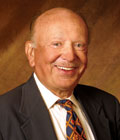Already deemed a best selling chemical engineering textbook by its publisher, chemical engineering professors Ernest Henley from the University of Houston and J.D. Seader from the University of Utah recently published “Separation Process Principles,” a textbook for a fundamental chemical engineering course.
John Wiley and Sons publishing says this textbook will appear in classrooms in more than 100 chemical engineering departments in the country, including Rice University, Virginia Polytechnic Institute and State University, and Yale University.
Henley, who has authored more than a dozen books, said the second edition of this 1998 text was “a major undertaking.”
In 1981, Henley and Seader wrote “Equilibrium-Stage Separation Operations in Chemical Engineering,” which was the foundation for the first edition of “Separation Process Principles.”
“The basics are the same, but the chemical engineering curriculum has evolved more with the introduction of biomedical engineering,” Henley said. “The medical industry has grown to be very large, and it’s being incorporated into chemical engineering. There are also new scientific advances that have been incorporated into this text, but the fundamentals haven’t changed.”
Publishers urge authors with popular texts to update every six years, Henley said, and because engineering is a science of application, the alterations in society as a whole, not just engineering, necessitate innovative learning materials.
“Engineering is largely applications,” Henley said. “There are new applications created to makechemicals different ways, which is dictated largely by economics. In this edition, there is also more on energy conservation and other environmental topics.”
Additions include a section on dimensions and units to facilitate the use of systems that permeate applications to separation processes, new material on the thermodynamics of difficult mixtures, and tables of typical diffusivity vales and formulae and meanings of dimensionless groups. Plus, this text includes three additional chapters, which were only previously available in hard copy as supplemental chapters for instructors on Leaching and Washing, Crystallization, Desublimation and Evaporation, and Drying Solids.
To review or purchase the textbook, click here.
